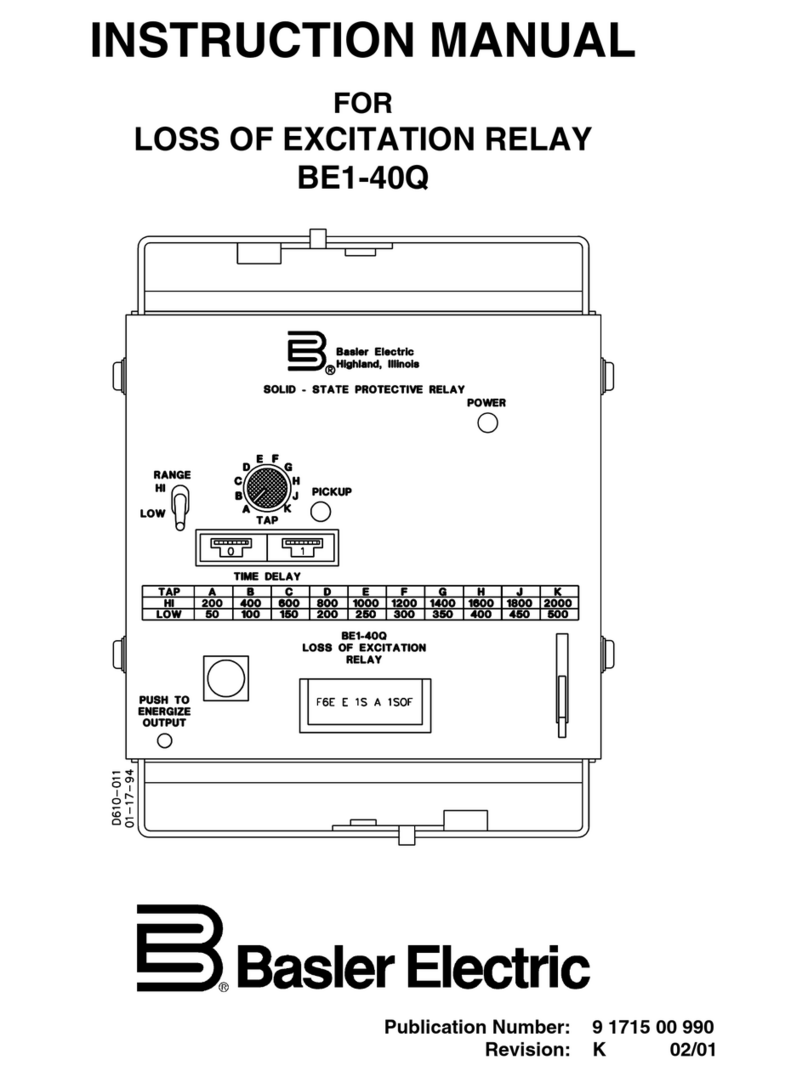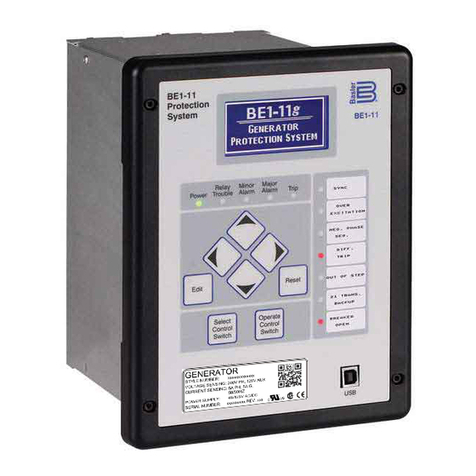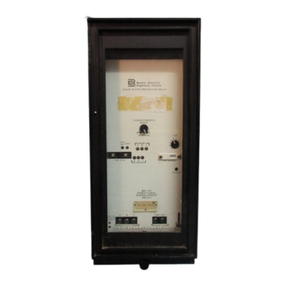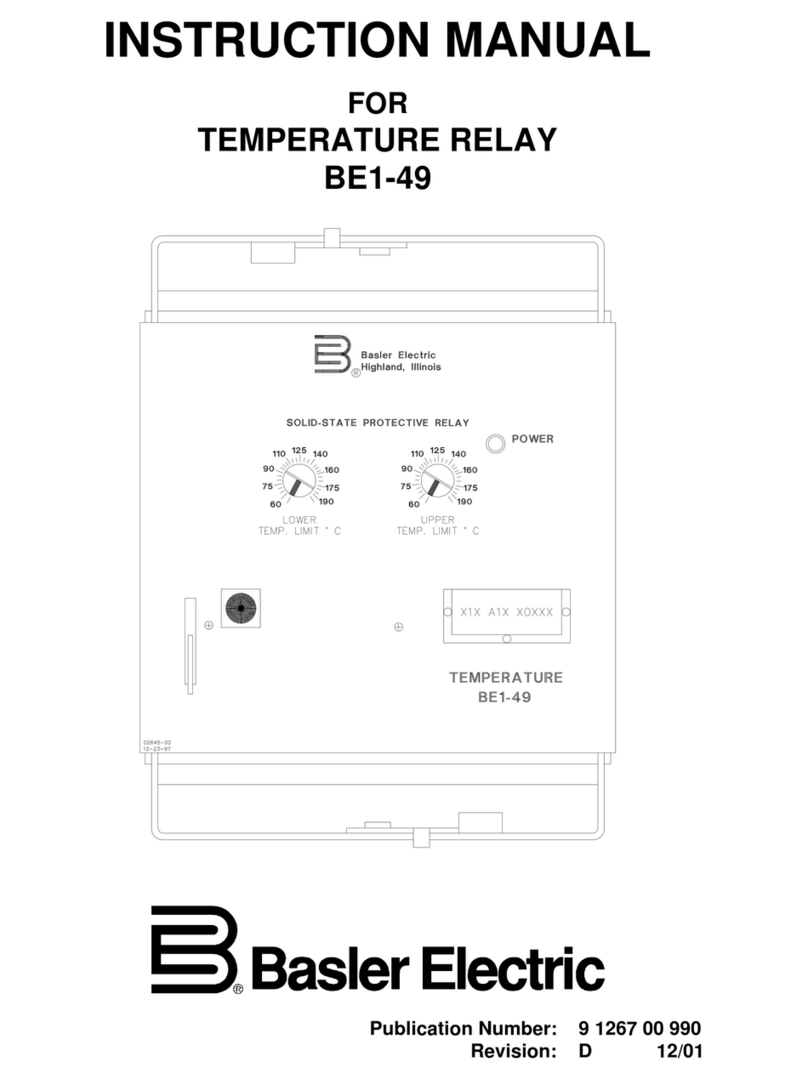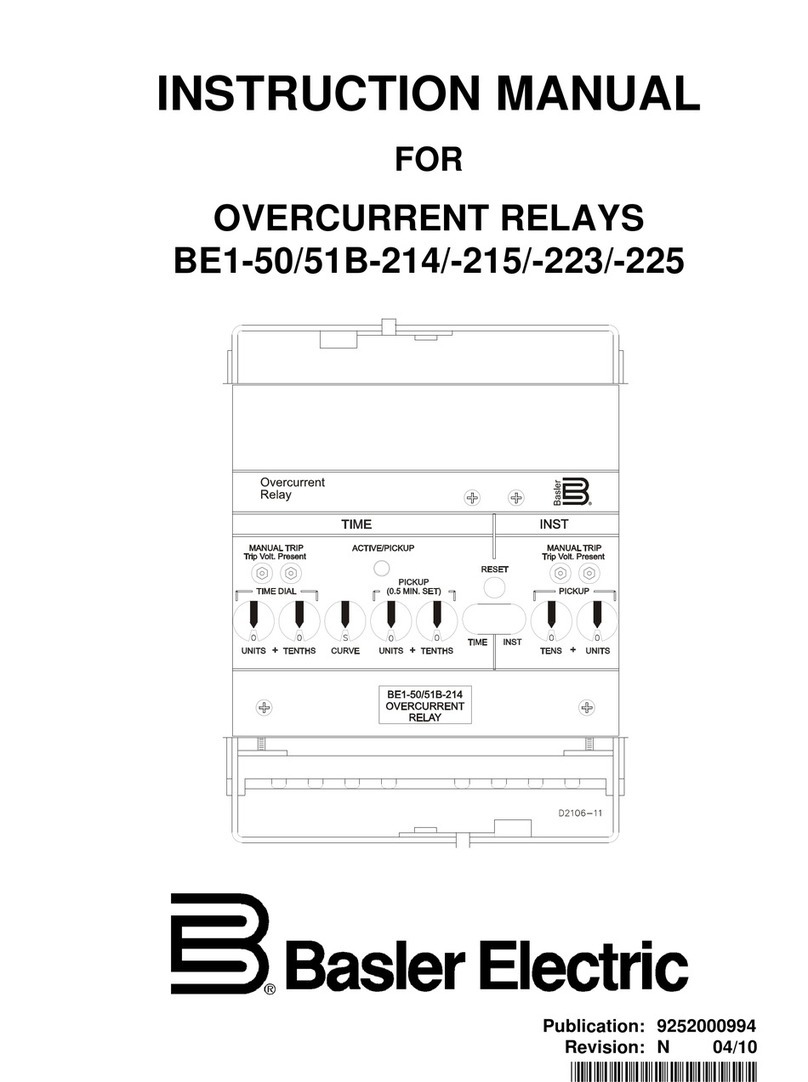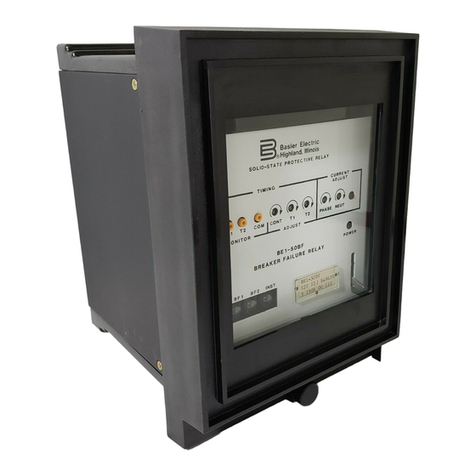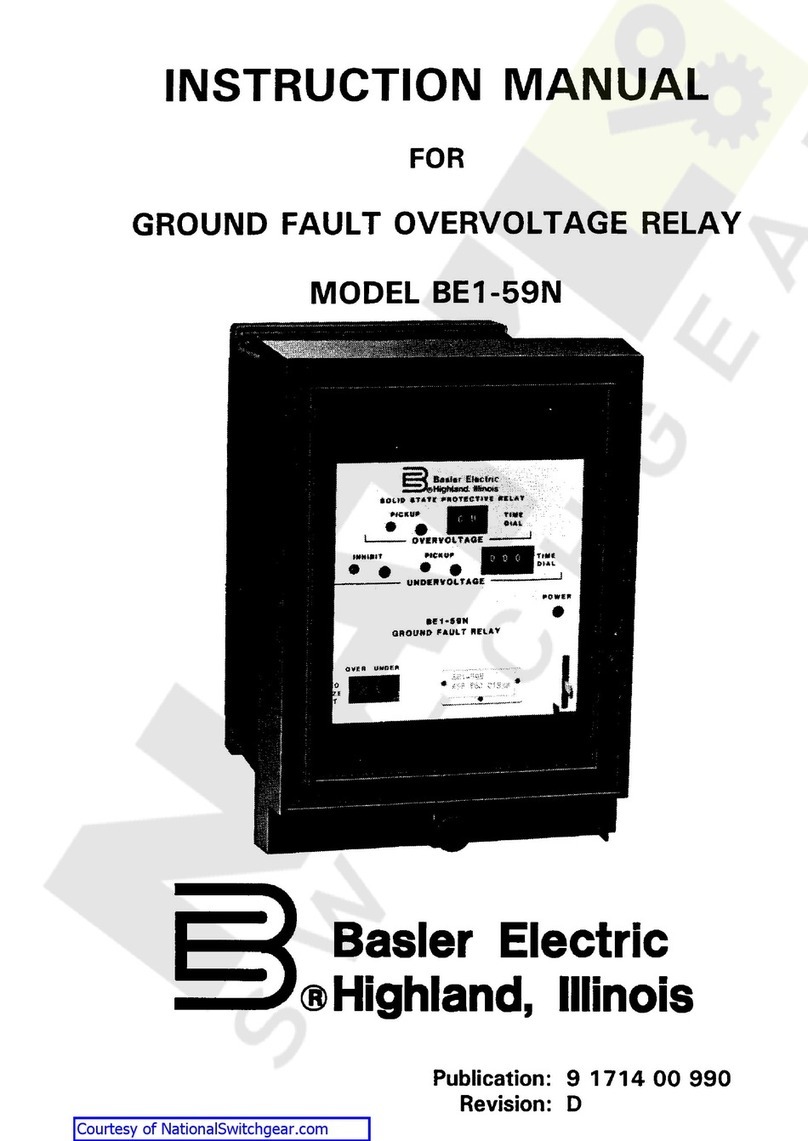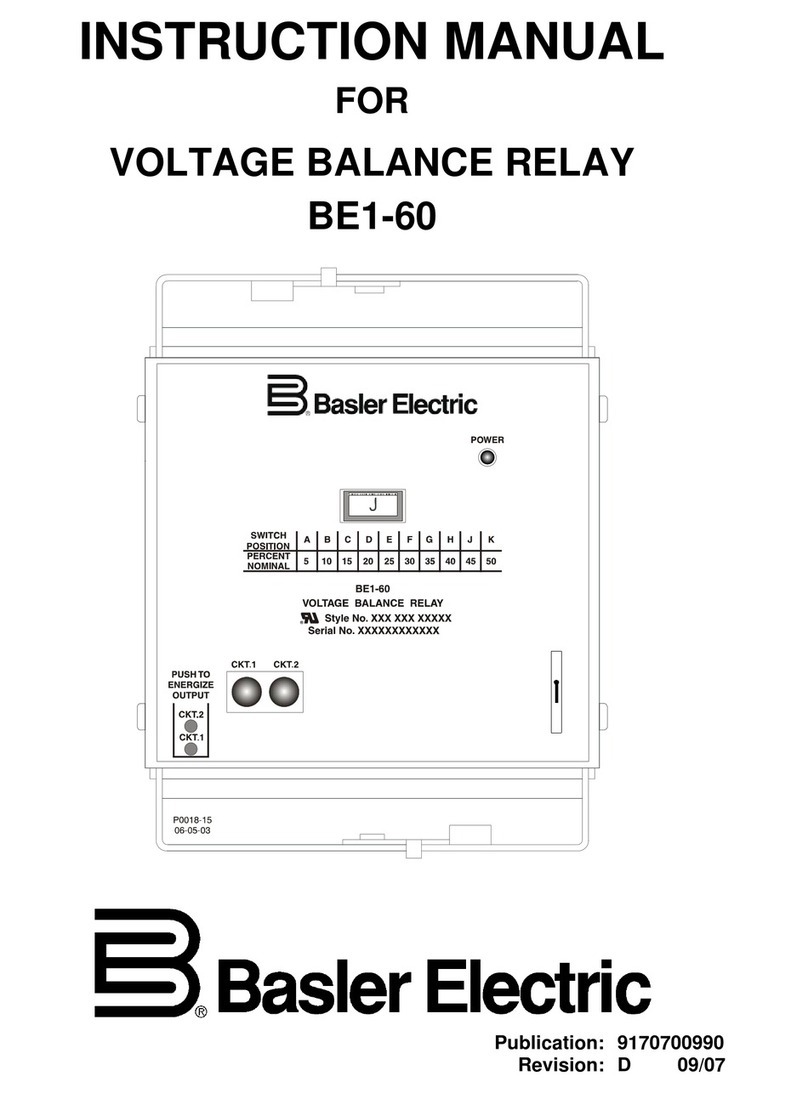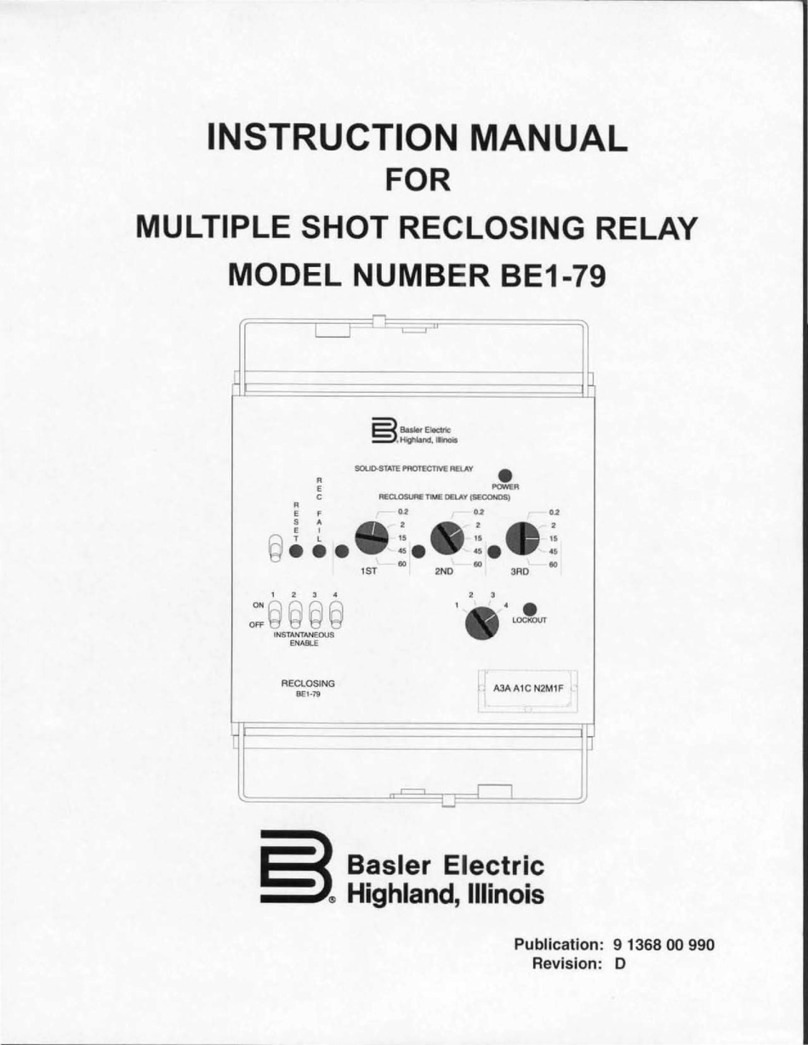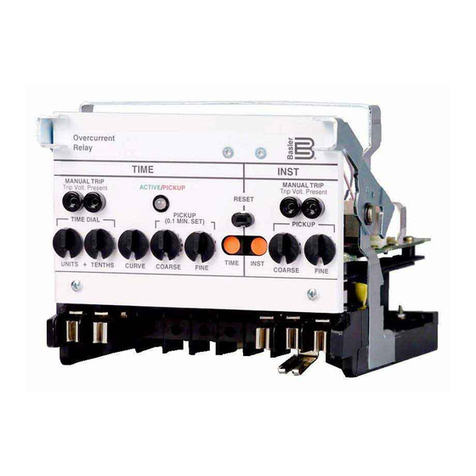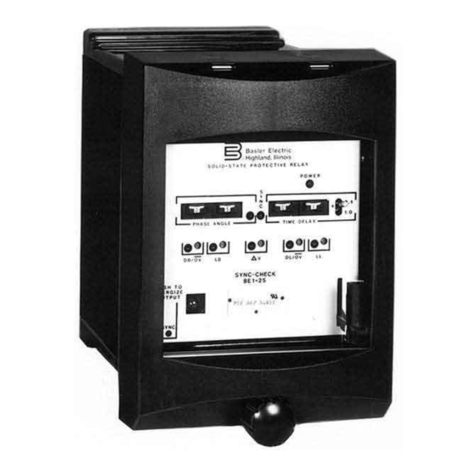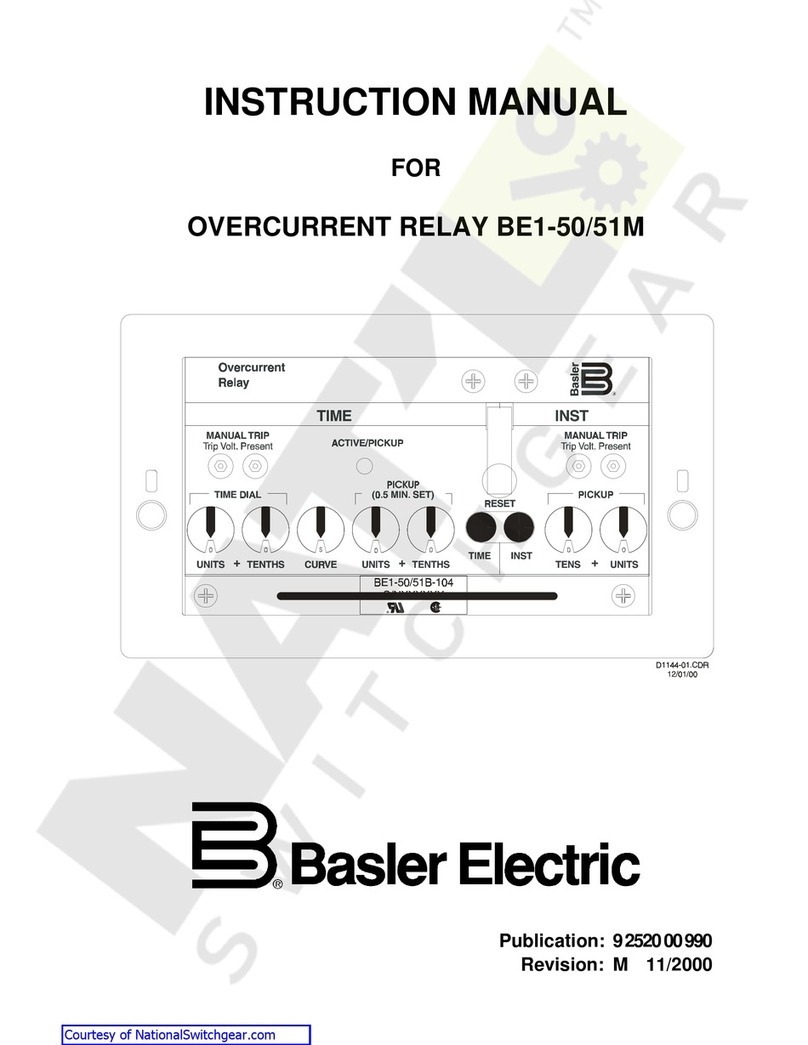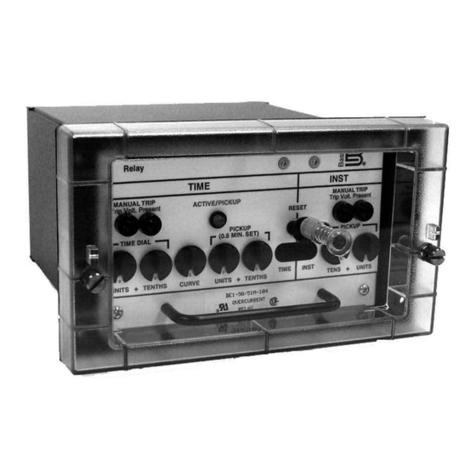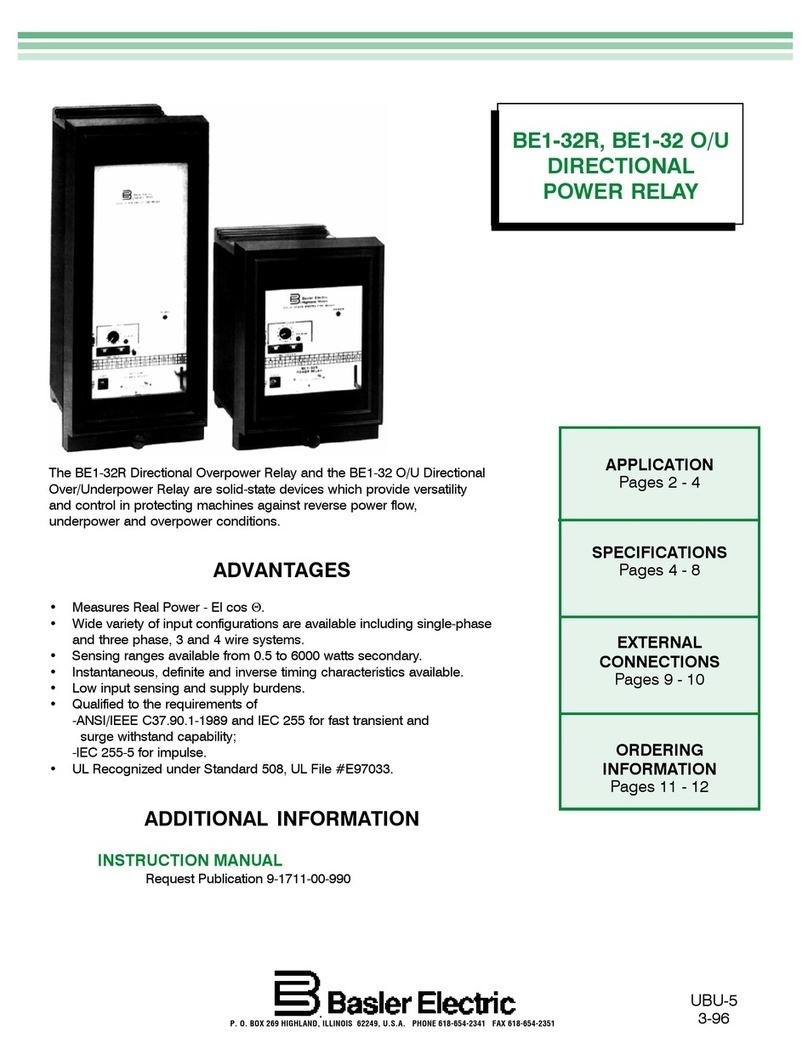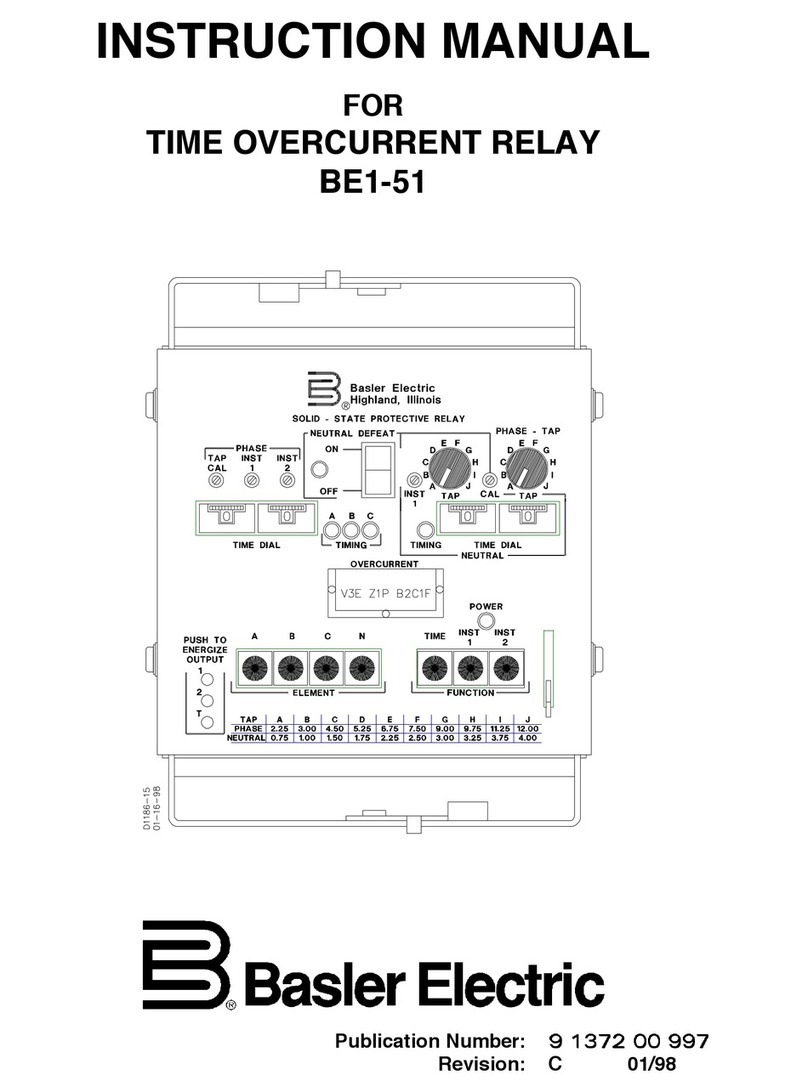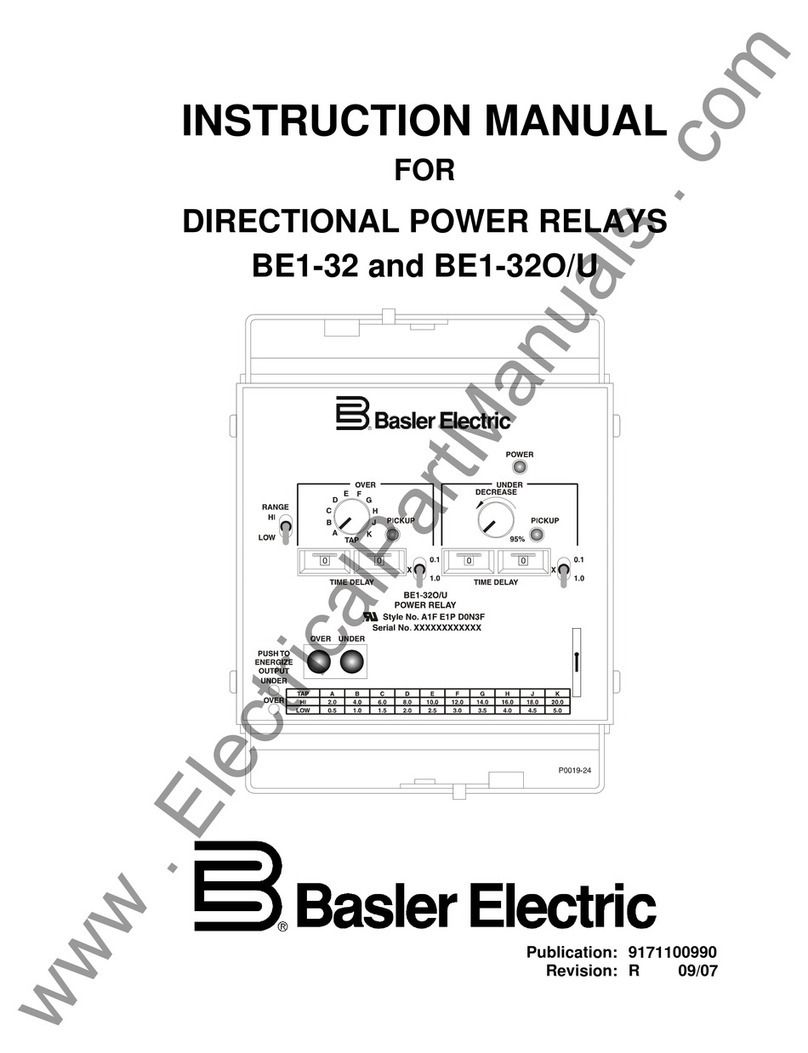
viii BE1-87T Introduction 9171300990 Rev R
SECTION 4 •INSTALLATION.................................................................................................................. 4-1
GENERAL........................................................................................................................................... 4-1
RELAY OPERATING PRECAUTIONS............................................................................................... 4-1
MOUNTING......................................................................................................................................... 4-1
DIELECTRIC TEST............................................................................................................................. 4-9
CONNECTIONS.................................................................................................................................. 4-9
RELAY DISASSEMBLY.................................................................................................................... 4-17
Precautions................................................................................................................................. 4-17
Circuit Board Removal Procedure.............................................................................................. 4-17
DISABLING UNUSED INPUTS......................................................................................................... 4-18
Single-Phase Units..................................................................................................................... 4-20
Three-Phase Units...................................................................................................................... 4-20
SENSING CONNECTION DIAGRAMS ............................................................................................ 4-20
Single-Phase Input Sensing Connections.................................................................................. 4-20
Three-Phase Input Sensing Connections................................................................................... 4-20
SETTING THE BE1-87T................................................................................................................... 4-33
Method........................................................................................................................................ 4-33
Procedure One ........................................................................................................................... 4-33
Procedure Two ........................................................................................................................... 4-42
CHECKING THE RELAY SETTINGS AND SYSTEM INPUTS........................................................ 4-49
MAINTENANCE................................................................................................................................ 4-50
STORAGE......................................................................................................................................... 4-50
TEST PLUG ...................................................................................................................................... 4-50
SECTION 5 •TEST PROCEDURES ........................................................................................................ 5-1
OVERVIEW......................................................................................................................................... 5-1
EQUIPMENT REQUIRED................................................................................................................... 5-1
Verification Tests.......................................................................................................................... 5-1
RESTRAINED PICKUP TESTING EXAMPLES ................................................................................. 5-2
Increasing One Input from Balance.............................................................................................. 5-2
Decreasing One Input from Balance ............................................................................................ 5-5
TEST SETUP DIAGRAMS.................................................................................................................. 5-7
VERIFICATION TESTS: 5 AMP CT, 50 OR 60 HZ UNITS ................................................................ 5-9
Restrained Pickup Level Verification............................................................................................ 5-9
Input (or Tap) Switch Verification ............................................................................................... 5-10
Unrestrained Pickup Verification ................................................................................................ 5-11
Second-Harmonic Restraint Verification .................................................................................... 5-11
Fifth-Harmonic Restraint Verification.......................................................................................... 5-12
Response Time Verification........................................................................................................ 5-13
VERIFICATION TESTS: 1 AMP CT, 50 OR 60 HZ UNITS .............................................................. 5-14
Restrained Pickup Level Verification.......................................................................................... 5-14
Input (or Tap) Switch Verification ............................................................................................... 5-15
Unrestrained Pickup Verification ................................................................................................ 5-16
Second-Harmonic Restraint Verification .................................................................................... 5-16
Fifth-Harmonic Restraint Verification.......................................................................................... 5-17
Response Time Verification........................................................................................................ 5-18
OPERATIONAL TEST PROCEDURES............................................................................................ 5-19
Restrained Pickup....................................................................................................................... 5-19
Unrestrained Pickup ................................................................................................................... 5-19
Second-Harmonic Inhibit............................................................................................................ 5-19
Fifth-Harmonic Inhibit ................................................................................................................. 5-20
TESTING THREE-PHASE UNITS WITHOUT CHANGING JUMPERS ........................................... 5-20
Jumper Positions Wye-Wye ....................................................................................................... 5-21
Jumper Positions Wye-Delta1.................................................................................................... 5-21
Jumper Positions Wye-Delta2.................................................................................................... 5-22
Jumper Positions Delta1-Delta1................................................................................................. 5-22
Jumper Positions Delta2-Delta2................................................................................................. 5-23
Jumper Positions Delta1-Delta2................................................................................................. 5-23
www . ElectricalPartManuals . com

